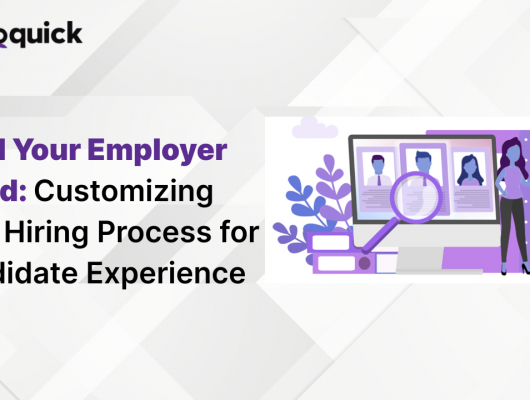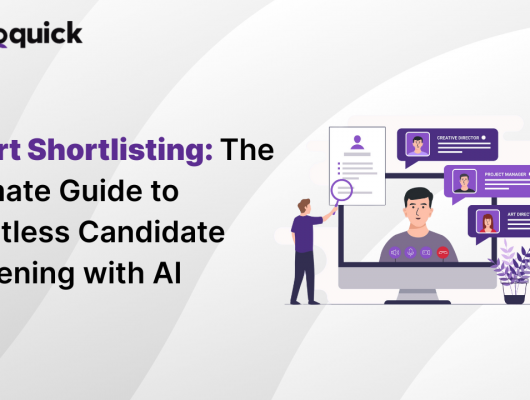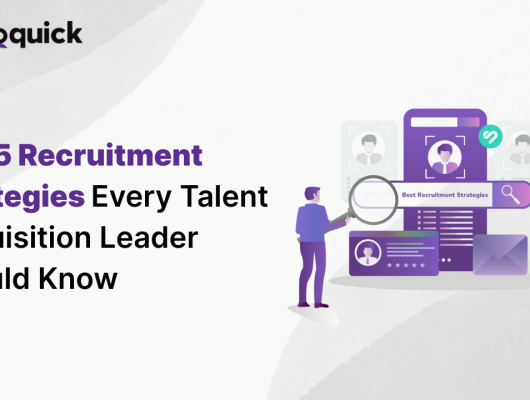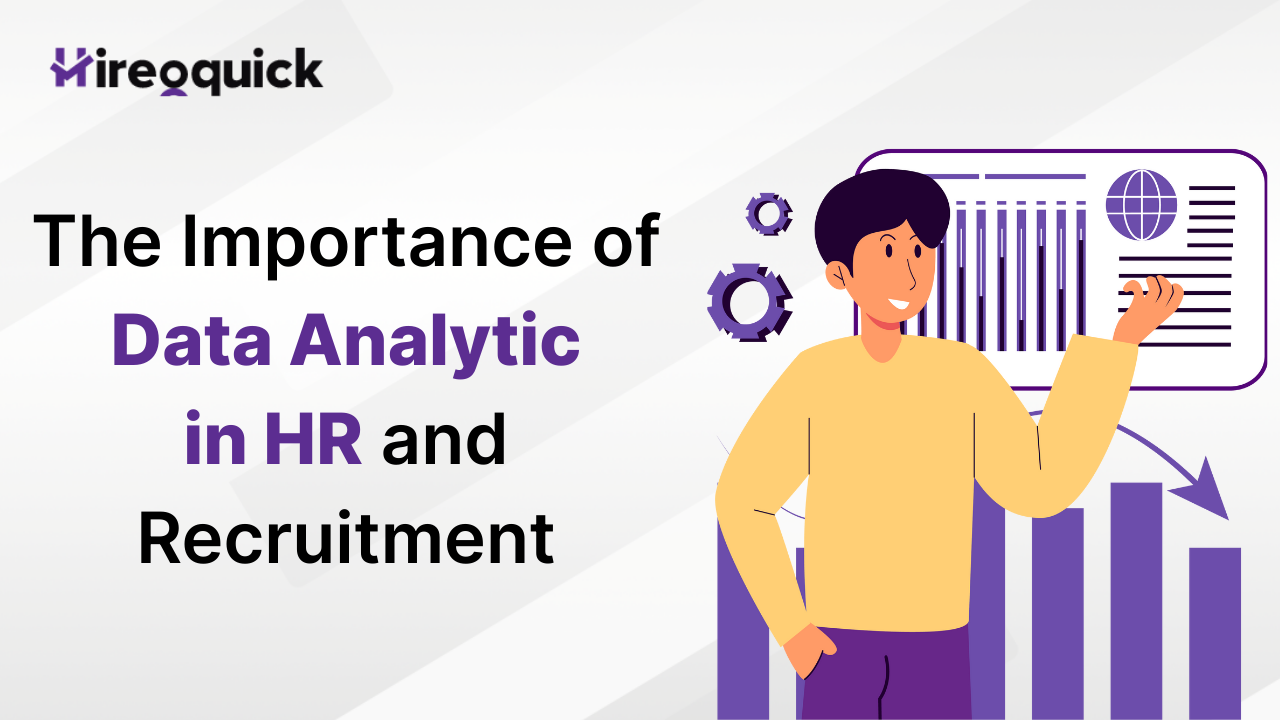
HR teams, traditionally focused on human interaction, are now leveraging data analytics in HR, revolutionizing recruitment, decision-making, and employee management. By integrating data analytics, HR professionals can make informed, data-driven decisions that enhance recruitment efficiency and employee experience. In this blog, we explore the significance of data analytics in HR and how platforms like HireOquick are streamlining the recruitment process through data-driven insights.
Understanding Data Analytics in HR
Data analytics in HR involves using data to gain insights into the workforce, optimize recruitment, boost retention, and enhance organizational performance. By analyzing data like employee performance and hiring trends, HR can make informed decisions to improve strategies and outcomes.
Analytics in HR helps shift the focus from intuition-based decision-making to a more objective, evidence-based approach. The growing volume of data available—from employee surveys and performance metrics to candidate assessments—provides HR teams with valuable insights into various aspects of the recruitment and employee management process. Understanding Data Analytics in HR is becoming increasingly important for organizations to make data-driven decisions that optimize workforce management and employee experience.
Why Data Analytics is Essential for Modern Recruitment
The recruitment landscape has undergone a significant transformation in recent years, thanks to the increasing reliance on technology and data. Here are several key reasons why data analytics is essential in modern recruitment:
Improving Recruitment Efficiency
Recruiting the right talent is a complex, time-consuming process. Traditional recruitment methods often rely on subjective judgment, which can lead to poor hiring decisions. Integrating data analytics into recruitment allows HR teams to assess candidate suitability, quickly analyze resumes, predict fit, optimize job postings, target talent pools, and track recruitment campaign success.
Reducing Bias in Hiring Decisions
One of the most significant challenges HR faces is unconscious bias during the hiring process. Human bias—whether based on gender, ethnicity, or experience level—can cloud the decision-making process and lead to unbalanced hiring practices.
Data analytics helps mitigate this bias by relying on objective data. Algorithms can analyze resumes and candidate profiles based on criteria like skills, qualifications, and experience without being influenced by external factors. By reducing bias, companies are better able to build a more diverse and inclusive workforce.
Enhancing Candidate Experience
In a competitive job market, candidate experience has become a crucial factor in attracting and retaining top talent. Data analytics enables HR teams to gain insights into how candidates interact with job postings and recruitment processes.
With these insights, HR professionals can optimize application processes, personalize communication, and make candidates feel valued at every step of the recruitment journey. This not only improves the candidate experience but also strengthens the employer brand.
Maximizing Employee Retention and Engagement
While recruitment is vital, retention and engagement are equally important for the long-term success of an organization. In addition, data analytics can be applied to monitor and improve employee retention and satisfaction. By continuously assessing employee feedback and performance, organizations can proactively address issues, resulting in a more engaged and satisfied workforce. As a result, businesses can reduce turnover and foster a positive work environment.
HR teams can use data from employee surveys, performance evaluations, and feedback systems to understand employee engagement levels and identify factors contributing to turnover. By addressing these issues proactively, companies can improve employee satisfaction and reduce churn.
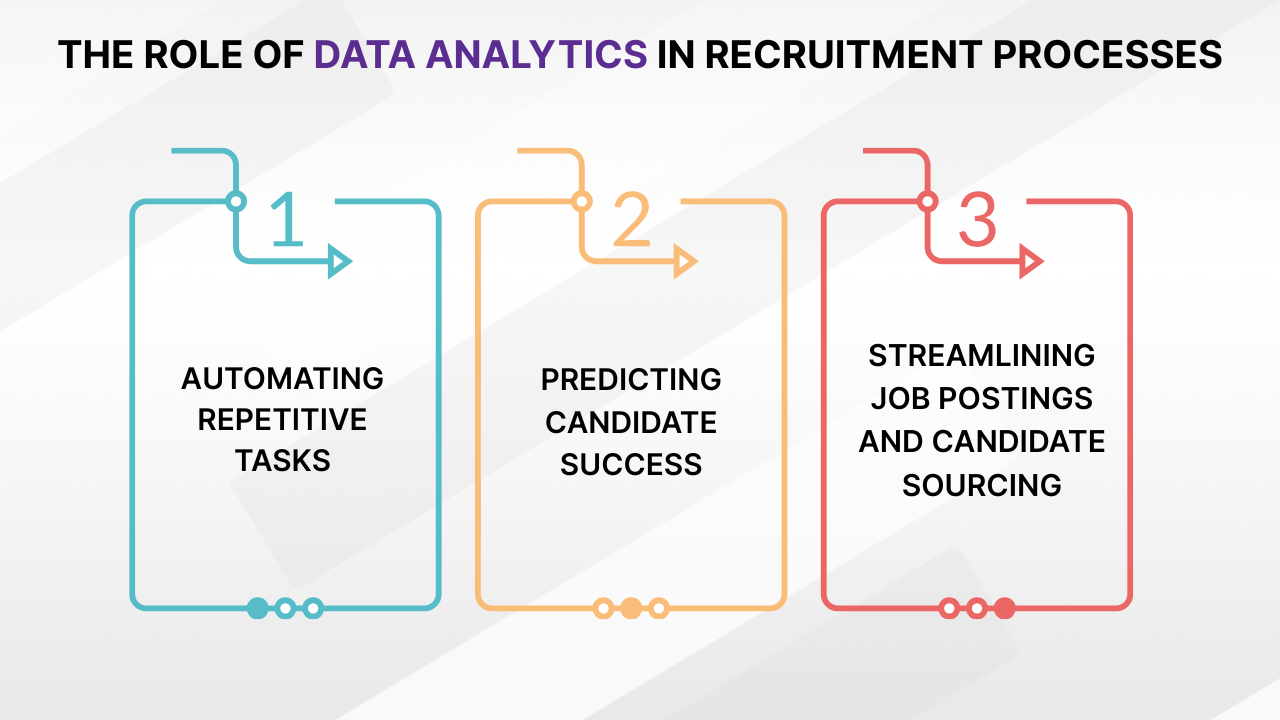
The Role of Data Analytics in Recruitment Processes
With the increasing availability of data, HR departments are leveraging these tools to streamline the recruitment process. Here’s how data analytics is playing a significant role:
Streamlining Job Postings and Candidate Sourcing
By analyzing historical hiring data, companies can pinpoint the best job boards and tailor job descriptions to attract the right talent. It also aids in sourcing candidates from social media, professional networks, and passive candidates.
Predicting Candidate Success
Data analytics in HR uses algorithms and predictive analytics to assess a candidate’s likelihood of success based on factors like past performance, skills, and cultural fit, reducing hiring risks and focusing on high-potential candidates.
Automating Repetitive Tasks
Recruitment can involve numerous repetitive tasks, from screening resumes to scheduling interviews. Data analytics and automation can help streamline these tasks, freeing up HR professionals to focus on more strategic activities.
Platforms like HireOquick utilize AI to automate resume parsing, shortlisting candidates, and scheduling interviews. By automating these tasks, recruitment teams can move candidates through the hiring process faster and with greater accuracy.
How HireOquick Enhances Recruitment with Data Analytics
As recruitment processes evolve, platforms like HireOquick are at the forefront of utilizing data analytics to optimize the hiring journey. HireOquick combines the power of AI and data-driven insights to transform recruitment, offering tools for everything from job creation to candidate onboarding.
AI-Powered Resume Parsing and Shortlisting
One of the key features of HireOquick is its AI-powered resume parsing tool.
HireOquick uses advanced data analytics to quickly identify top candidates based on skills, experience, and qualifications, automating the shortlisting process and saving HR teams time on manual resume screening.
Customizable Candidate Assessments
With HireOquick, companies can design custom assessments tailored to specific job requirements. These assessments leverage data to ensure they accurately measure candidate skills, whether through coding challenges, personality tests, or other evaluation methods.
By integrating AI and machine learning, HireOquick continually improves its assessments, ensuring they are aligned with the latest trends in recruitment and candidate behavior.
Data-Driven Interview Scheduling and Candidate Engagement
HireOquick streamlines interview scheduling by using it to find optimal times based on candidate and HR team availability, eliminating scheduling delays. It also helps HR teams track candidate progress and engagement, optimizing the overall experience.
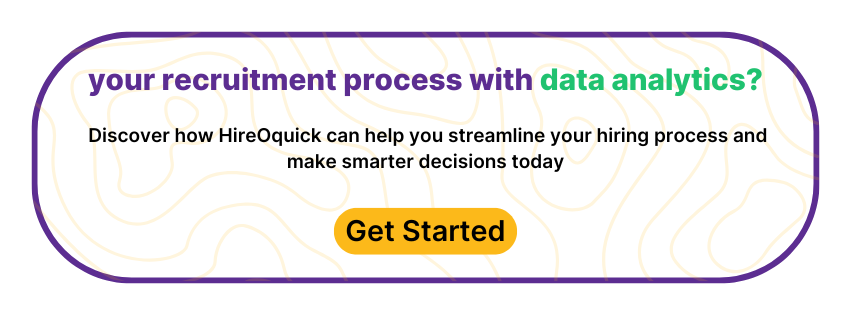
Benefits of Data Analytics in HR and Recruitment
Incorporating data analytics into HR practices provides organizations with several advantages, including:
Better Decision-Making
With data analytics, HR teams can make more informed, objective decisions. Analytics enables real-time candidate evaluation, helping HR teams select qualified candidates who also fit the company culture. Furthermore, this data-driven approach ensures a more efficient and accurate selection process.
Improved Efficiency
Automation of administrative tasks—such as resume screening and interview scheduling helps HR tech teams reduce manual effort and speed up the hiring process. This, in turn, reduces costs and improves the efficiency of the entire recruitment workflow.
Enhanced Candidate Quality
By using data to assess candidate fit, HR teams can select individuals who align with job requirements, reducing turnover and improving long-term performance.
Scalability
As your organization grows, scaling recruitment efforts can become a challenge. Data analytics tools and platforms like HireOquick offer scalable solutions to handle increased hiring needs without compromising on quality.
Conclusion
Data analytics in HR is no longer just a luxury but a necessity in today’s fast-paced, data-driven world. By leveraging data, HR teams can streamline recruitment processes, make smarter hiring decisions, and improve employee retention. Platforms like HireOquick make it easier for businesses to harness the power of it, ensuring that recruitment efforts are as efficient and effective as possible. As companies continue to adapt to new technological advancements, the integration of data analytics in HR will become even more crucial in attracting, hiring, and retaining top talent. Invest in data-driven recruitment today and stay ahead of the competition.

